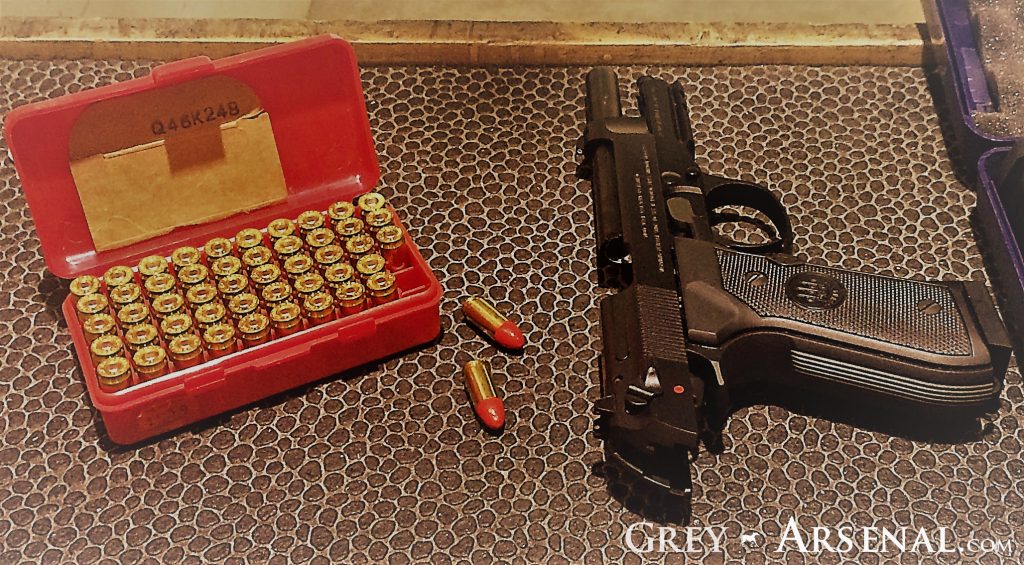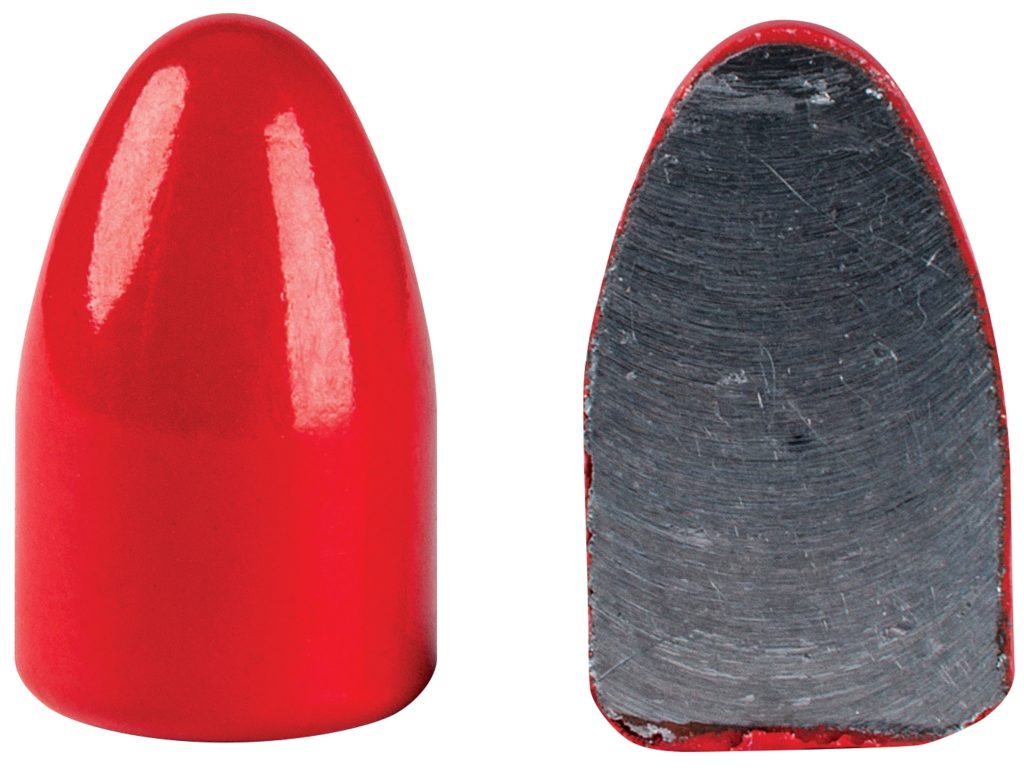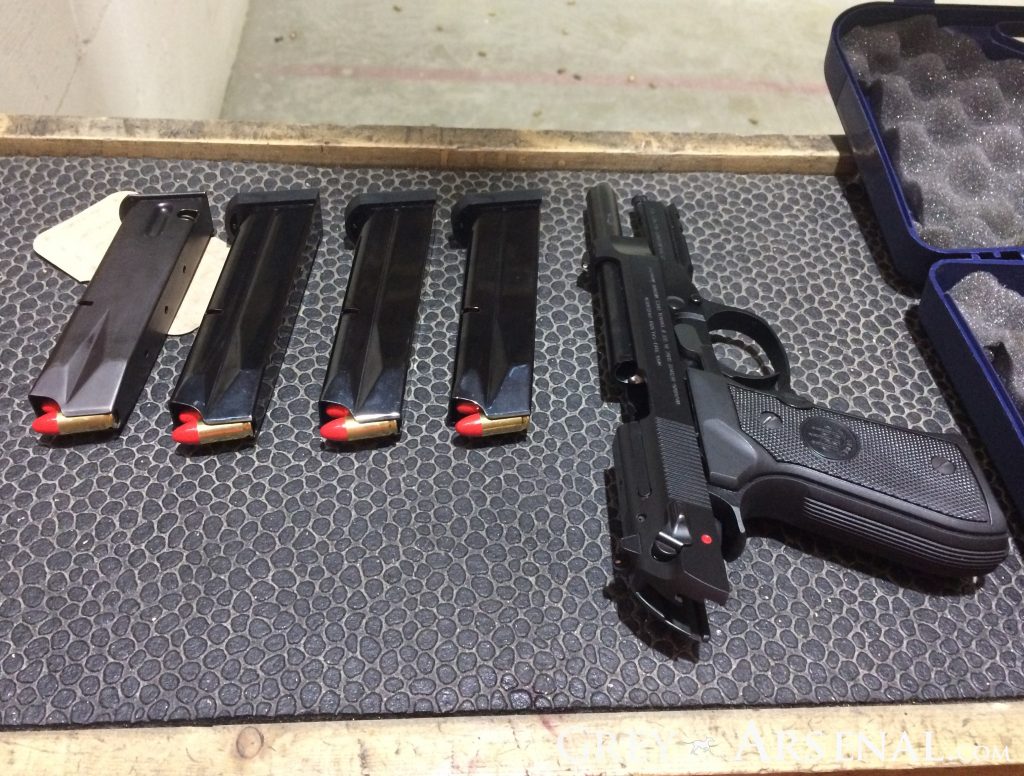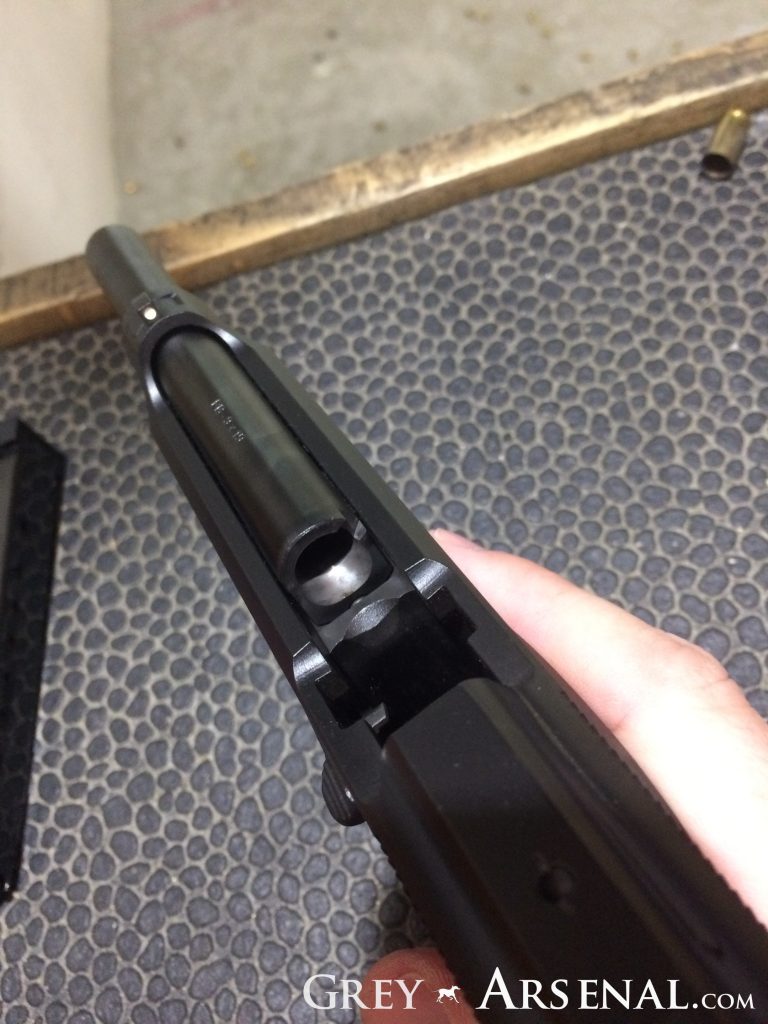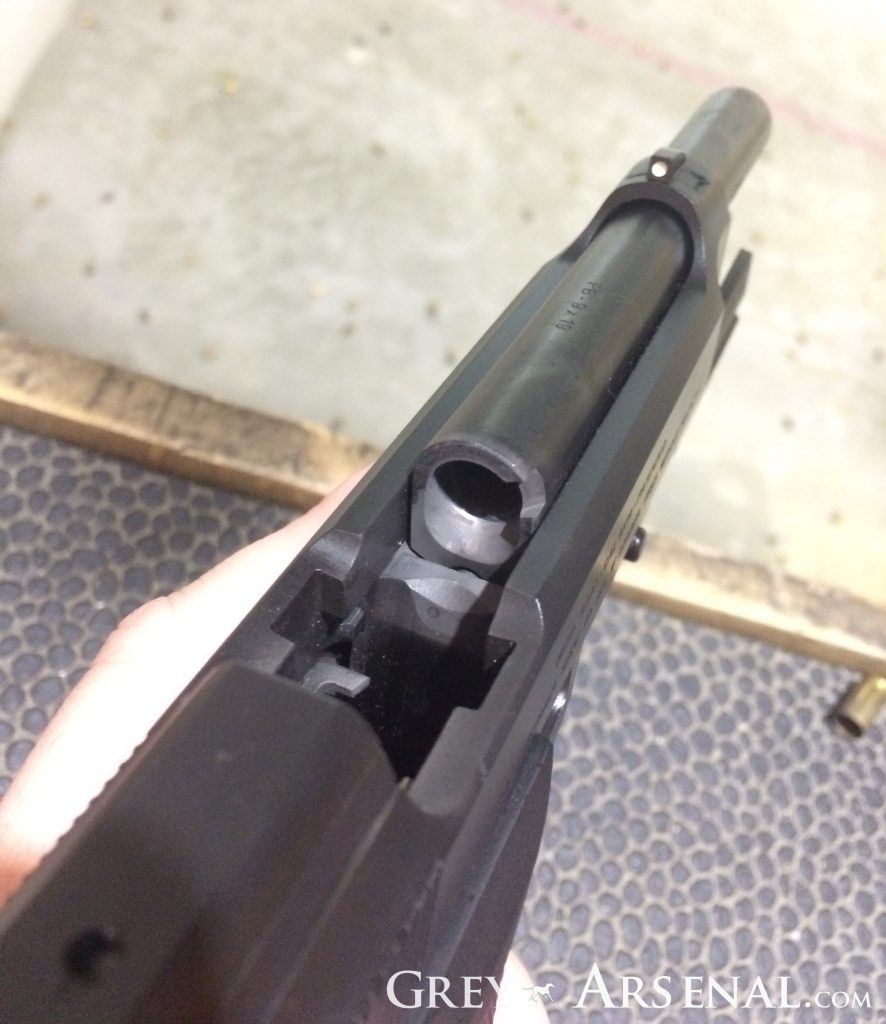We haven’t had a post in a while, as most of the activity has been over on the facebook page, but I’ve got a few topics queued up, so hopefully I’ll be able to get back into the swing of it.
First up is a 2-part test of Federal’s American Eagle Syntech. The main feature of this cartridge is a ‘polymer-encapsulated’ bullet. Like a Total Metal Jacket (TMJ) round, the polymer surrounds the entire bullet including the base. This is great for indoor ranges (especially those with poor ventilation) as it limits lead vapor. The advertised benefit of the polymer as opposed to a copper jacket is the lack of metal-on-metal contact leading to lower temperatures, and less copper/lead fouling.
Additionally, the cartridge features clean burning propellants to further reducing fouling. Of course, that’s a common marketing statement in order to sell you overpriced ammunition – so I figured I’d put it to the test. At the time I tested this, I was only able to find the 115gr 9mm in stock, though they also sell this cartridge in 165gr .40 S&W and 230gr .45ACP. This limited some of the tests I planned to do, but more on that below.
I decided to test the 9mm with a Beretta 92A1 that I shoot pretty often, so I could get a good read on the accuracy of this cartridge. Additionally, it’s chrome-lined barrel would with judging the cleanliness.
So how did it do?
After the first magazine, there was only a touch of haze on the surfaces, but it still barely looked like it had been fired.
Here was the results after the 50 round box. As far as I could tell, it did seem to have less buildup than the PMC Bronze I normally shoot, and consider pretty clean. This was significantly cleaner than some of the cheaper stuff I’ve used. Since this test I’ve used it a few more times, and the claim of less fouling seems to hold up.
As far as accuracy – as to be expected with a premium priced practice ammunition, was pretty good. Definitely better than cheaper stuff like range reloads / Tula / Freedom Munitions / etc., but about on par with PMC Bronze / Winchester Train & Defend, at least as tested at 15 yards.
The ammunition also claims to be lower recoil thanks to lower friction – but I didn’t seem to feel any difference.
As far as the lower temperature claims, it seems logical to me, but I wasn’t really able to notice a difference or do any empirical test to that end. What I would like to do, however, is get my hands on some of the .45ACP and run a magazine through a submachine gun, then test with a non-contact thermometer, and compare against some Federal American Eagle. I’d also like to see if the ‘clean burning propellants’ make any difference in suppressor fouling, especially since Federal makes an even more premium ‘American Eagle Suppressor‘ load. So keep an eye here or on our facebook page for updates.
